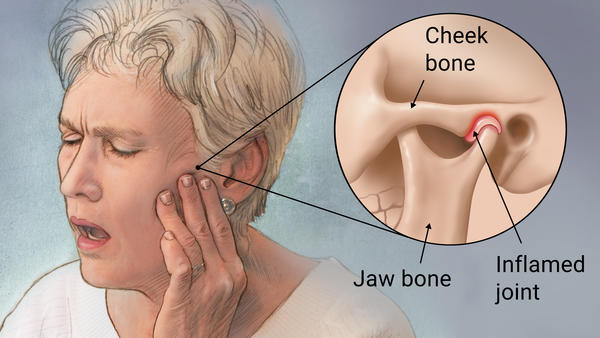DIET FOR TMD (Temporomandibular Dysfunction)

Temporomandibular disorder is a condition
affecting the movement of the jaw. It's not usually serious and generally gets
better on its own. The
pain and jaw dysfunction associated with Temporomandibular Disorders (TMD) can
impact your ability to chew and swallow food. How and what you are able to eat
can seriously compromise your nutritional and health status - an aspect of TMD
that is often overlooked by both patients and health care providers.
The TMJ’s:
Temporomandibular joint (TMJ)
syndrome is pain in
the jaw joint that can be caused by a variety of medical problems. The TMJ
connects the lower jaw (mandible) to the skull (temporal bone) in front of the
ear. Certain facial muscles that control chewing are also attached to the lower
jaw. Problems in this area can cause head and neck pain, facial pain, ear
pain, headaches, a jaw that is locked in position or difficult to open,
problems with biting, and jaw clicking or popping sounds when you bite.
Temporomandibular joint syndrome is also referred to as temporomandibular joint
disorder. Overall, more women than men have TMJ syndrome. The TMJ is comprised
of muscles, blood vessels, nerves, and bones. You have two TMJs, one on each side
of your jaw.

Symptoms:
The temporomandibular joints are
complex structures containing muscles, tendons, and bones. Injury to or
disorders of these structures can all result in pain in the jaw area. Jaw pain
may occur on one side or on both sides, depending upon the cause. Also
depending upon the exact cause, the pain may occur when chewing or may occur at
rest. Additionally, other medical conditions not related to the TMJ may cause
perceived pain in the jaw area.
Signs and symptoms of temporomandibular joint (TMJ) syndrome
include:
- pain in the jaw joint
- jaw clicking and popping
- ear pain/earache
- popping sounds in ears
- headaches
- stiff or sore jaw muscles
- pain in the temple area
- locking of the jaw joint
The right diet is part of the treatment:
Eat organ meat
now and then and include more red meat and more fat in your diet, particularly
moderate amounts of saturated fat. In addition, make broth from animal bones
and tendons to extract hyaluronic acid for joint health and add lots of greens
for magnesium content.
You may need to
try eliminating different foods from your diet to see if this decreases your
problems with TMJ. Foods containing salicylates can be a problem. Salicylates
occur in many vegetables, and numerous fruits are high in this substance. Jams,
jellies and juice tend to be high in salicylates, and so are hot peppers,
olives, radishes, tomatoes, endive, chicory and water chestnuts. Other foods
that can aggravate TMJ include wheat and dairy foods, foods with high levels of
vitamin C or iron and products that contain sugar, yeast or preservatives.
The Nutrition:
It is important to look at
nutrition as part of your soft food diet, so that weight fluctuations or
nutrient deficiencies are unlikely to occur. Taking vitamins or other
supplements can help keep your nutrition balanced while resting the TMJ.
Depending on the length of time you are on a soft diet you may want to seek the
advice of a dietitian; Dr. Goldberg and his team will be happy to recommend
someone in the Buffalo area. To
lessen pain and other symptoms during an occurrence of TMJ, avoid eating hard
foods, crunchy foods, thick or large foods that involve opening your mouth wide
and foods that require a lot of chewing. This gives your jaw and
temporomandibular joints the opportunity to rest and heal, says Colgate. Some
good foods include cooked vegetables and fruits, cottage cheese, mashed
potatoes, scrambled eggs, smoothies, soup and yogurt. If you must eat food that
requires chewing, cut it into small pieces.
Comments
Post a Comment